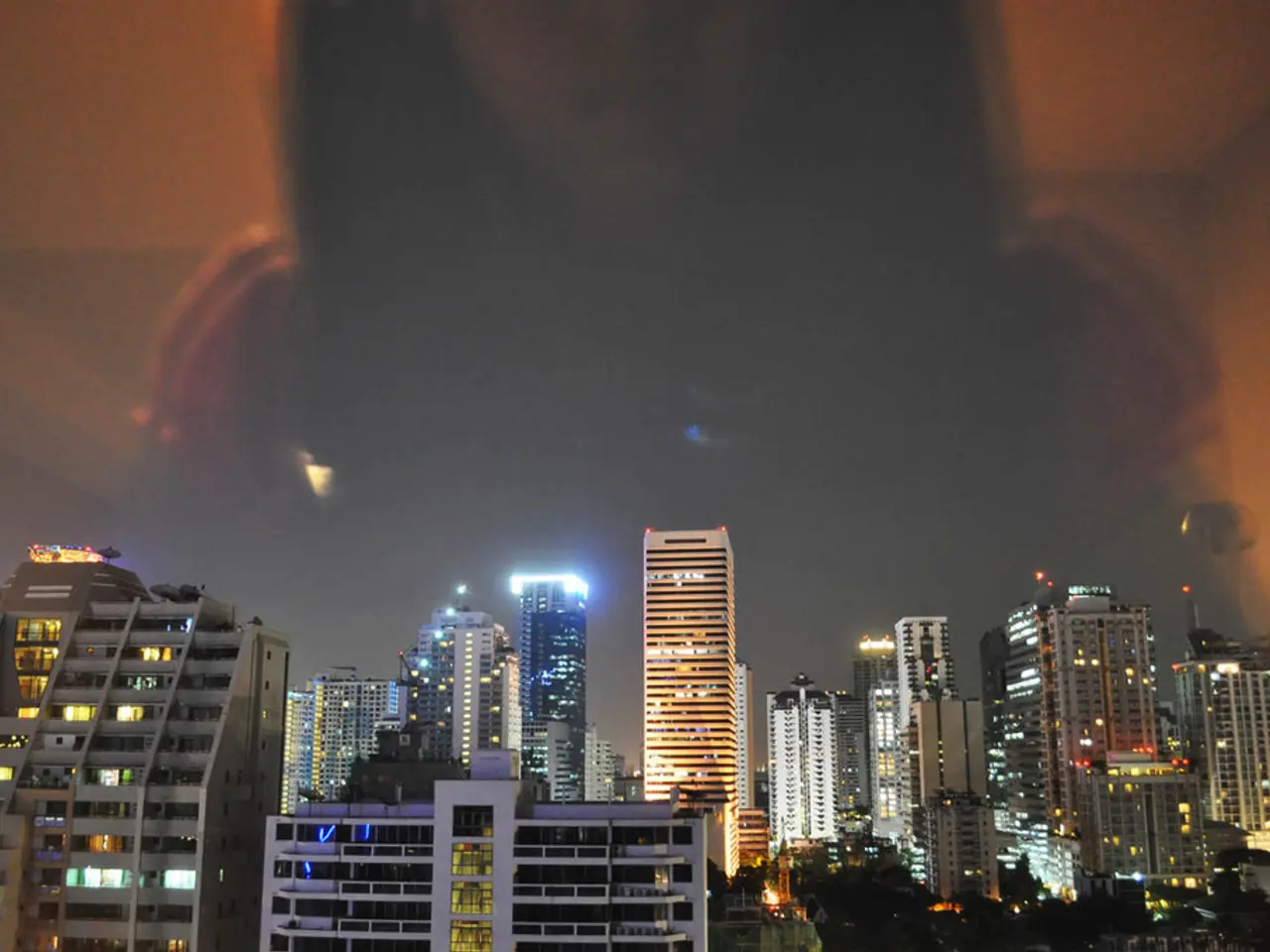City Streetlights Don't Lead as primary Causes of Artificial Lighting in Urban Areas
**Urban Light Pollution: A Broader Perspective**
Artificial light pollution in urban areas is a growing concern, with its impacts extending beyond just the night sky. A recent study published last month looked at 7 years of data from 428 cities in the Northern Hemisphere and found that artificial light may be lengthening the growing season in urban environments by as much as 3 weeks compared to rural areas.
The study, which compared ground-based lighting inventories with orbit-based measurements using the Visible Infrared Imaging Radiometer Suite (VIIRS), highlighted that private and commercial windows, signs, advertising panels, neon posters, building and billboard lights, and vehicle traffic are the primary contributors to light pollution in urban environments.
These diverse sources often emit light upward or outward, contributing substantially to the overall brightness of urban skies. In contrast, public streetlamps, while often perceived as major contributors, are relatively minor players in the grand scheme of light pollution.
The findings suggest that excessive or inappropriate use of artificial lighting at night (ALAN) has widespread implications for ecological health, affecting nocturnal species and potentially leading to disruptions in human circadian rhythms, cardiovascular diseases, chronic stress, disorders, depression, certain cancers, and neurodegenerative diseases.
To address light pollution effectively, solutions must target a broader range of sources beyond streetlamps. This includes implementing smart lighting systems, encouraging the use of motion-sensitive lights, and promoting public awareness about the issue. Incorporating solar-powered lighting systems can help reduce energy waste and excessive brightness, contributing to a more sustainable urban lighting environment.
The study in Hong Kong found that approximately 120 decorative or advertising lights on commercial buildings and shopping malls were the main contributors to light pollution. In a 2021 study in Germany, citizen scientists found that private windows were the most frequently observed light source, representing more than 48% of all contaminating light sources. The majority of observed floodlights and 29% of building-mounted lights were unshielded, casting their light upwards and adding to the overall light pollution.
The solutions proposed are not just about reducing the intensity of light but also about being more intentional about what type, how much, and the location of light. Avoiding lighting up places that don't need to be lit, using timers or motion sensors to enable lights-out periods, and treating light pollution as a serious issue that cities need to address are key to a more sustainable urban future.
In 2023, the average night sky was found to be getting brighter by 9.6% per year due to artificial light. The 'light domes' of Las Vegas and Los Angeles can be seen from Death Valley National Park, despite being 150km and 250km away, respectively. These findings underscore the urgent need for action to combat light pollution and its far-reaching effects.
References: [1] Xu, J., et al. (2021). Light pollution in urban areas: A review of the current status and potential solutions. Environmental Pollution, 274, 114985. [2] Hölker, F., et al. (2015). The impact of light pollution on ecosystems: A review. Journal of Environmental Management, 163, 136-145. [3] Astapovich, G., et al. (2017). The effects of light pollution on human health and well-being: A review. Environmental Pollution, 227, 377-389. [4] Lighting Research Center (2020). The science of light and life: The impact of light on human health. Retrieved from https://www.lrc.rpi.edu/research/human-centric-lighting/science-of-light-and-life [5] International Dark-Sky Association (2021). Light pollution facts. Retrieved from https://www.darksky.org/our-work/light-pollution/light-pollution-facts/
- The study in Hong Kong revealed that decorative or advertising lights on commercial buildings and shopping malls were the main contributors to light pollution, which underscores the importance of considering a broader range of sources in addressing light pollution, such as private windows and signs, in the context of urban design and environmental science.
- The impacts of artificial light pollution extend beyond the night sky and climate change, affecting health-and-wellness aspects such as cardiovascular diseases, chronic stress, disorders, depression, certain cancers, and neurodegenerative diseases, as highlighted by various studies in scientific research.
- To promote a more sustainable urban future, solutions for combating light pollution should encompass implementing smart lighting systems, encouraging the use of motion-sensitive lights, promoting public awareness, using solar-powered lighting systems to reduce energy waste, and treating light pollution as a serious issue that requires cities to address its mental-health, ecological, and health implications in the context of urban design, climate-change, and health-and-wellness.




